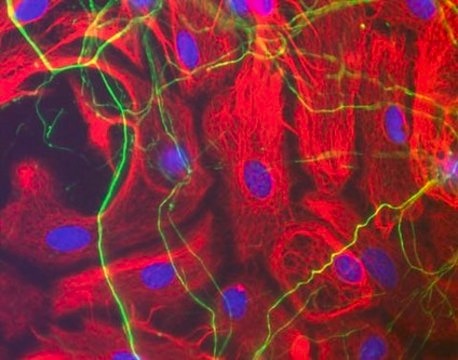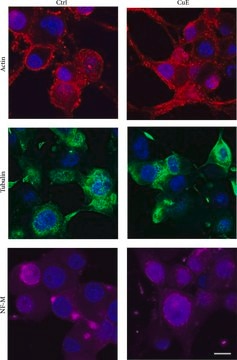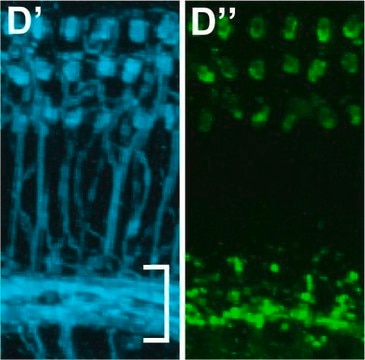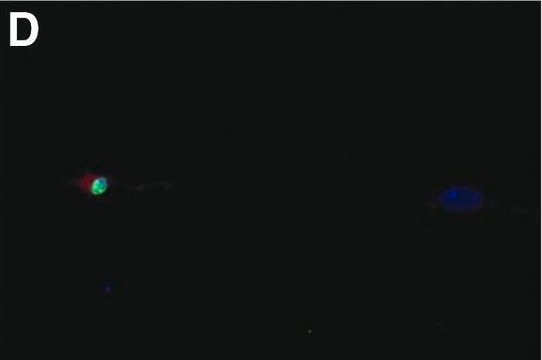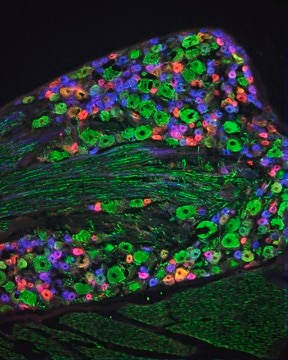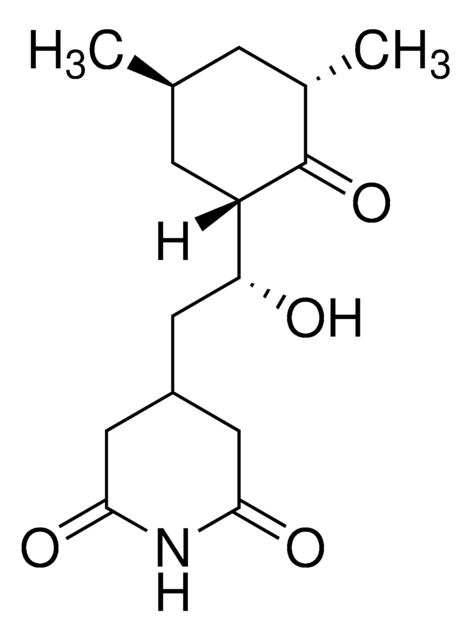AB1987
Anti-Neurofilament M (145 kDa) Antibody, CT
serum, Chemicon®
Synonym(s):
Anti-NEF3
About This Item
Recommended Products
biological source
rabbit
Quality Level
antibody form
serum
antibody product type
primary antibodies
clone
polyclonal
species reactivity
reptile, chicken, rat, quail, pig, human, mouse, bovine, rabbit
manufacturer/tradename
Chemicon®
technique(s)
immunocytochemistry: suitable
immunohistochemistry (formalin-fixed, paraffin-embedded sections): suitable
western blot: suitable
NCBI accession no.
UniProt accession no.
shipped in
dry ice
target post-translational modification
unmodified
Gene Information
bovine ... Nefm(281347)
chicken ... Nefm(396206)
human ... NEFM(4741)
mouse ... Nefm(18040)
rabbit ... Nefm(100009343)
rat ... Nefm(24588)
General description
Specificity
Immunogen
Application
A 1:200 dilution of a previous lot was used in Immunohistochemistry.
Staining is not affected by neurofilament phosphorylation. Optimal Staining With TE Buffer, pH 9.0, Epitope Retrieval: Human Cerebellum
Immunohistochemistry(paraffin):
Optimal working dilutions must be determined by end user.
Neuroscience
Neurofilament & Neuron Metabolism
Neuronal & Glial Markers
Quality
Western Blot: 1:1000 dilution of this lot detected Neurofilament M on 10 μg of mouse brain lysates..
Target description
Physical form
Storage and Stability
Handling Recommendations:
Upon receipt, and prior to removing the cap, centrifuge the vial and gently mix the solution. Aliquot into microcentrifuge tubes and store at -20°C. Avoid repeated freeze/thaw cycles, which may damage IgG and affect product performance.
Analysis Note
Rat enteric neurons, rat spinal cord tissue Brain, Peripheral Nerve
Other Notes
Legal Information
Disclaimer
Still not finding the right product?
Give our Product Selector Tool a try.
recommended
Storage Class
10 - Combustible liquids
wgk_germany
WGK 1
flash_point_f
Not applicable
flash_point_c
Not applicable
Certificates of Analysis (COA)
Search for Certificates of Analysis (COA) by entering the products Lot/Batch Number. Lot and Batch Numbers can be found on a product’s label following the words ‘Lot’ or ‘Batch’.
Already Own This Product?
Find documentation for the products that you have recently purchased in the Document Library.
Our team of scientists has experience in all areas of research including Life Science, Material Science, Chemical Synthesis, Chromatography, Analytical and many others.
Contact Technical Service
